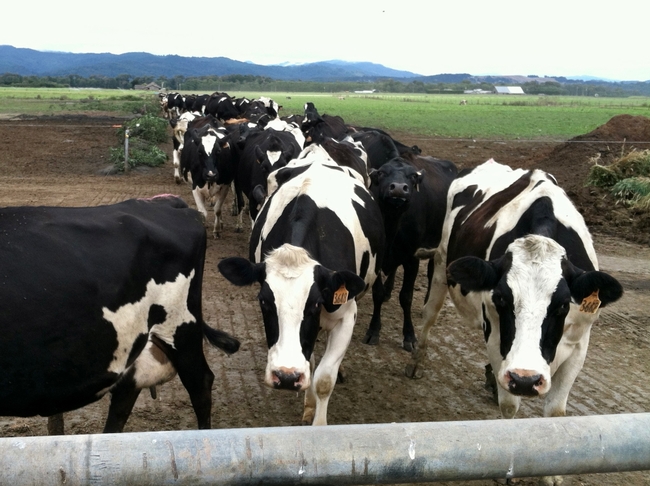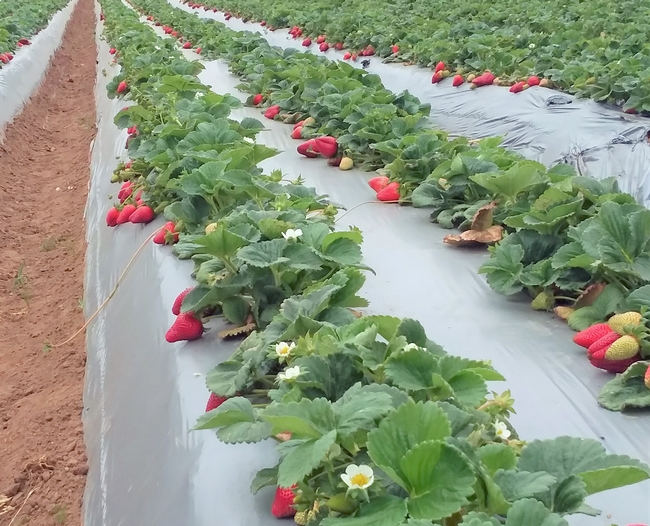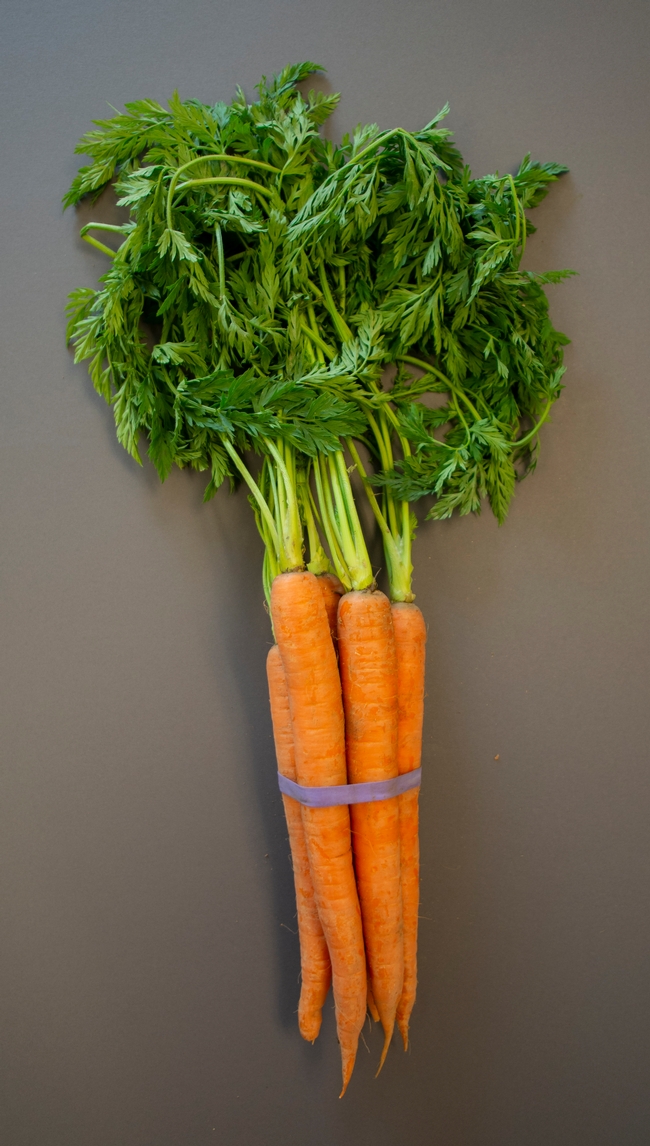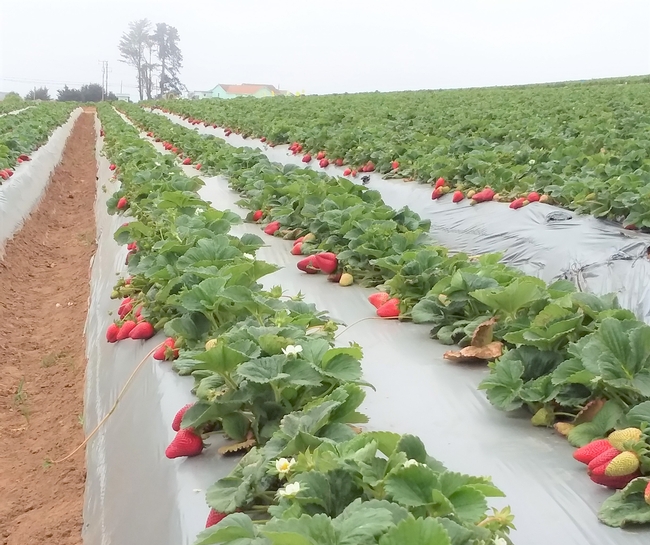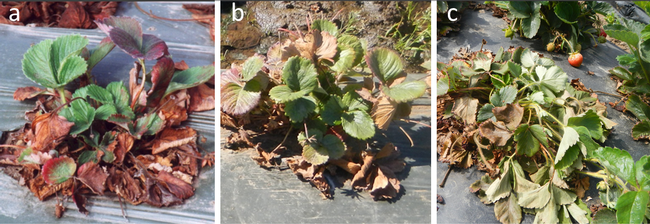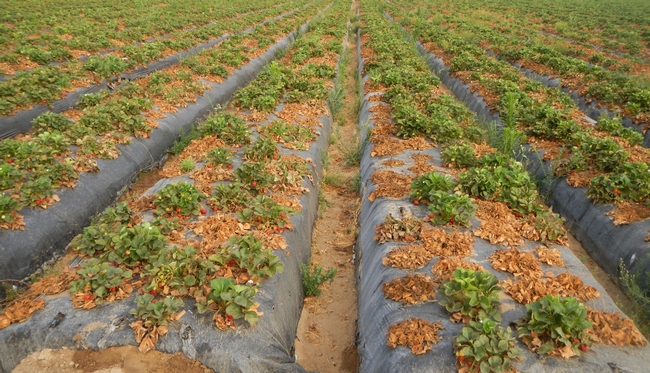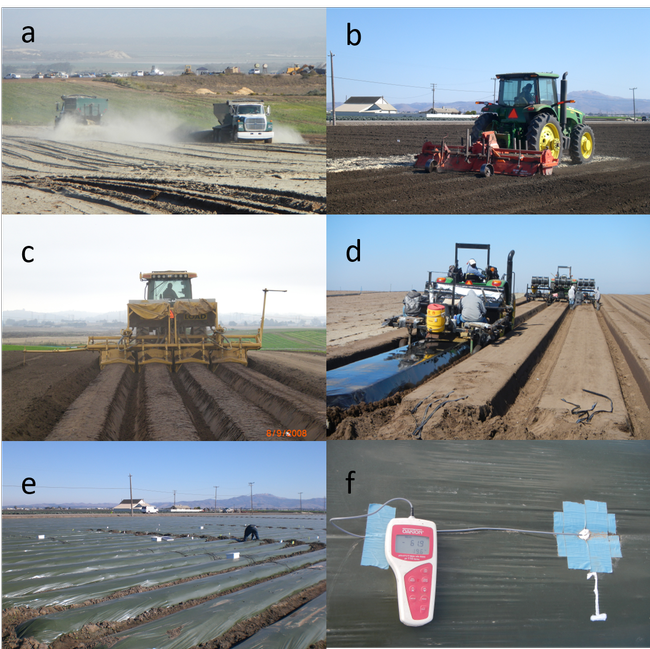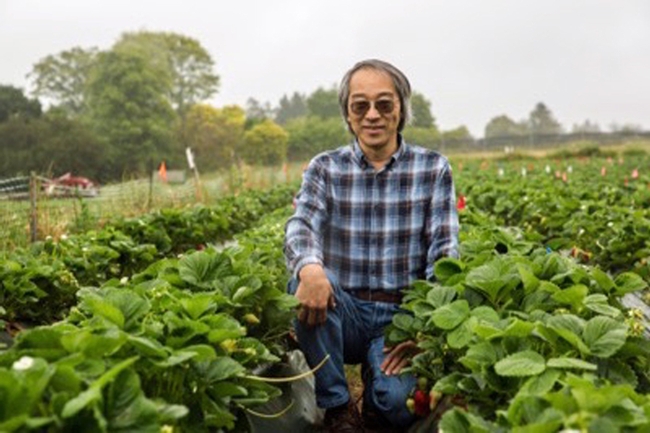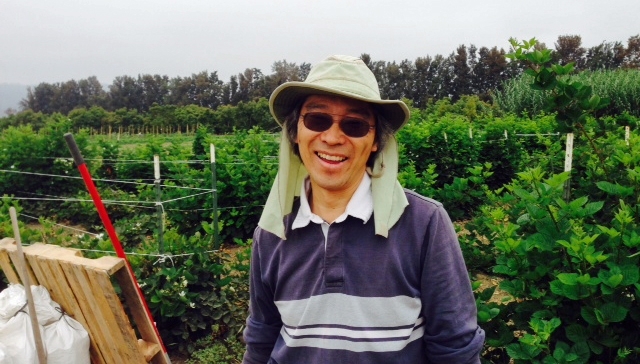Posts Tagged: Joji Muramoto
New California Organic Research Agenda available online
Organic Farming Research Foundation (OFRF) has published the new California Organic Research Agenda (CORA), a comprehensive report that examines current needs and challenges of organic farmers and ranchers across California and provides policy and research recommendations to address producer-identified issues.
The CORA report is a companion to OFRF's 2022 National Organic Research Agenda. The national organic survey data boasts responses from over 1,100 producers and 16 listening sessions held across the U.S. Using the California subset of the national survey data, the CORA report highlights the top production and non-production challenges cited by California's organic farmers and ranchers.
“Organic farming has been historically under-invested in, in terms of research, education and extension,” says OFRF Executive Director Brise Tencer. “Both the new California Organic Research Agenda and the 2022 National Organic Research Agenda present incredible feedback directly from organic farmers and provide a compelling roadmap for how to best support the growth of this important sector of agriculture.”
Report findings indicate that managing production costs is a substantial challenge for 71% of producers surveyed, and accessing labor proved to be the leading non-production challenge. An overwhelming number of state producers (76%) expressed substantial need for technical assistance with the organic management of weeds, pests, and disease. In addition to detailing farmer challenges on and off the field, OFRF's CORA report provides a comparison analysis of farmer responses based on commodity and farming experience. National and state comparisons are also included in the report.
Production of the CORA report was supported in part by the University of California Organic Agriculture Institute, a new statewide program within the UC Division of Agriculture and Natural Resources, as well as the UC Santa Cruz Center for Agroecology.
“One of our primary activities is to generate new research and extension programs focused on organic agriculture,” says Houston Wilson, director of the UC Organic Agriculture Institute. “The CORA report provides an excellent roadmap to guide and prioritize our efforts, we're really excited to turn this information into action.”
According to the California Department of Food and Agriculture, state farmers and ranchers were responsible for 40% of all organic agricultural product sales in the country. Data from a 2019 USDA organic survey concludes California has 965,257 acres in organic production, which is approximately 17.5% of all organic acreage in the country. OFRF's California Organic Research Agenda examines grower needs in the nation's top-producing state of organic agricultural commodities and specialty crops, paving the way for future research and investment.
"This report will benefit organic growers in California by playing a role as a critical reference to increase public support and develop research projects targeting specific needs that diverse organic growers in the state are facing," says Joji Muramoto, UC Cooperative Extension organic production specialist based at UC Santa Cruz.
The CORA report is available free online at https://ofrf.org/research/nora for farmers, policymakers, agricultural suppliers, seed companies and the general public.
Organic agriculture tops $3 billion in California farm gate sales
Organic farming continues to expand in California and now includes more than 360 commodities, according to a new University of California report. The number of organic growers, acreage and farm gate sales revenue is reported by commodity, county, region and statewide in the new “Statistical Review of California Organic Agriculture, 2013-2016.” The data are collected from farms that register as organic with the California Department of Food and Agriculture.
“This report highlights the incredible diversity and abundance of organic crops being grown across so many different geographic regions in the state, which reflects California's leading role in this production sector,” said Houston Wilson, director of the new UC Organic Agriculture Institute.
“Dairies continue to lead by value of organic production,” said Rachael Goodhue, UC Davis professor of agricultural and resource economics and coauthor of the report.
The number of organic growers in California jumped from 2,089 in 2013 to 3,108 in 2016. The top 10 organic commodities for sales value in 2016 were cow milk, strawberries, carrots, wine grapes, table grapes, sweet potatoes, almonds, raspberries, salad mix, and chicken eggs.
“This review is critical to understand the changes in the fast-growing organic agriculture sector in the state where more than 50% of the nation's organic vegetables and fruits are produced,” said Joji Muramoto, UC Cooperative Extension organic production specialist at UC Santa Cruz and coauthor of the report. “It provides statistics of all organic commodities produced across the state as well as at county level. This is the primary reference to learn about the size, diversity, and trends of organic agriculture in the state.”
In 2016, California organic sales were $3.1 billion with an average of $1 million in sales per farm, but revenue varied widely among farms. For example, San Diego County had the most organic growers (313) in 2016, but Kern County's 47 organic farmers earned the most in total organic sales: $381 million on 49,727 acres, excluding pasture and rangeland, according to Muramoto.
“The average gross income of organic farms increased 14-fold from 1994 to 2016, reaching $1 million in 2016,” Muramoto said. “However, 77% of growers received less than $500,000 per year and 22% of growers who made $500,000 or more per year received 94% of the total gross sales, showing the income concentration among organic growers in the state.”
The statistical review of California's organic agriculture had been published since 1998 by the late Karen Klonsky, UC Cooperative Extension specialist, and her team after statistics for organic agriculture became available in 1992 as a result of the California Organic Food Act.
The last report published by Klonsky, who passed away in 2018, covered 2009-2012. All previous organic agriculture statistics reports can be accessed at https://aic.ucdavis.edu/research1/organic.html.
“This report of organic data continues the series of studies initiated by Karen Klonsky many years ago. It contains vital summary information for industry and policymakers as well as researchers,” said Goodhue.
Since the data collection began in 1994, the number of organic growers in California has increased 2.8-fold to 3,109 and the farm-level sales 40-fold to $3.1 billion in 2016.
“Accurate annual data on California organic crop production, acreage and value is critical to understanding the scale and scope of this growing agricultural sector,” said Wilson. “As the UC Organic Agriculture Institute begins to develop research and extension programs, it is important that we have a reliable way to assess the extent and geography of organic production as well as track changes over time.”
Muramoto, who became the UC Cooperative Extension organic production specialist in 2019, collaborated with Goodhue, Daniel Sumner, director of the UC Agricultural Issues Center and UC Davis professor of agricultural and resource economics; and UC Davis graduate student Hanlin Wei to produce the latest statistical review of California's organic agriculture.
More recent years are not included because the data collected by CDFA changed in 2017 and again in 2019 so they are not comparable to the data in this report. The full report can be downloaded from the UC Agricultural Issues Center website at https://aic.ucdavis.edu/2020/10/06/statistical-review-of-californias-organic-agriculture-by-wei-goodhue-muramoto-and-sumner.
UC explores alternatives to fumigants for strawberries
Strawberries, which generated $2.2 billion for California growers mainly on the coast in 2019, are sensitive to soilborne diseases. Strawberry plant roots infected by fungi are unable to take in nutrients and water, causing the leaves and stems to wilt. The diseases reduce fruit yields and eventually kill infected plants.
To protect the delicate plants from pathogens, strawberry growers fumigate the soil with pesticides such as chloropicrin and 1,3-dichloropropene before planting transplants. Due to the potential negative effects on the environment and human health, however, use of fumigants are highly regulated and developing non-fumigant alternatives has been a priority of the strawberry industry.
For a biological alternative to manage soilborne diseases in strawberries, Joji Muramoto, UC Cooperative Extension organic production specialist based at UC Santa Cruz, has received a $411,395 grant from USDA National Institute of Food and Agriculture to study the ability of other crops to suppress strawberry pathogens in the soil.
Verticillium wilt, caused by Verticillium dahliae, is a common soilborne disease that can be controlled with anaerobic soil disinfestation (ASD), a fermentation-based biological treatment using carbon sources such as rice bran under plastic mulch in moist soils for 3 to 5 weeks in autumn. About 2,000 acres of berry fields, mostly organic, were treated with ASD in California and Baja California, Mexico, in 2019.
In 2008-09, the diseases fusarium wilt, caused by Fusarium oxysporum f. sp. fragariae, and charcoal rot, caused by Macrophomina phaseolina, emerged in Southern California and now threaten strawberry plants throughout the state.
ASD isn't as effective against F. oxysporum and M. phaseolina unless it is applied in summer on the coast. As saprophytes, they feed not only on living plants, but also can colonize crop residues and rice bran especially at lower coastal temperatures in autumn. Treating fields on California's coast with ASD during summer is difficult because it competes with the vegetable production period.
Based on promising studies in Asia and other areas, Muramoto plans to test alliums – such as onion, bunch onion and leek – and a certain variety of wheat (Summit 515) to see if they will suppress F. oxysporum and M. phaseolina. His team will conduct a series of greenhouse and field trials and test these crops with and without ASD to compare the effects on soilborne pathogens.
“Studies have shown the potential of using allium crops to control Fusarium wilt, and Summit 515 wheat for charcoal rot,” Muramoto said. “Our goal is to examine the effectiveness of suppressive crops, optimize them for California strawberry production systems, and evaluate their economic feasibility for commercial use.”
“No single tactic is likely to replace fumigants,” he said. “Integration of multiple biological approaches such as crop rotation, ASD, and use of resistant strawberry varieties is a key to develop a successful non-fumigant-based soilborne disease management strategy for strawberries. This project is a part of such broader efforts.”
At the end of the three-year study, he plans to share the results at workshops, field days and webinars.
Rachael Goodhue, UC Davis professor of agricultural economics; Carol Shennan, UC Santa Cruz professor of environmental studies; and Peter Henry, USDA Agricultural Research Service plant pathologist, are co-principal investigators on the study with Muramoto.
Also collaborating on the project are Christopher Greer, UC Cooperative Extension integrated pest management area advisor in San Luis Obispo County; Oleg Daugovish, UCCE vegetable and strawberry advisor in Ventura County; Mark Bolda, UCCE director strawberry and cane berry advisor in Santa Cruz County; Jan Perez, food systems specialist, and Darryl Wong, farm research manager, at UC Santa Cruz Center for Agroecology and Sustainable Food Systems; Miguel Ramos of Ramos Farm; Agriculture and Land-Based Association (ALBA); Driscoll's; Naturipe; and The Oppenheimer Group.
Muramoto hired as first UC Cooperative Extension organic specialist
For the first time, the University of California has hired a Cooperative Extension specialist dedicated to organic agriculture.
Joji Muramoto, a longtime research associate with the University of California Santa Cruz, will coordinate a statewide program focused on the organic production of strawberries and vegetables. His first day in the new position will be May 29.
Muramoto is highly regarded for the depth of his knowledge of soil science and for his pioneering contributions to the organic production of strawberries—a high-value crop that is notoriously vulnerable to pests and soil-borne disease. He will have a joint affiliation with UC's Cooperative Extension (CE) and the Environmental Studies Department and the Center for Agroecology and Sustainable Food Systems (CASFS) at UCSC.
CE specialists serve as liaisons between the university and the agricultural sector, building research programs that align with the needs of farmers and conducting collaborative on-farm studies that address problems growers are facing.
"I'm honored and humbled to have this position," said Muramoto, who plans to focus on soil fertility and the organic management of soil-borne diseases. In his position as assistant specialist, he looks forward to expanding his reach statewide and to coordinating short courses on organic pest management and organic soil fertility management.
CASFS Director Daniel Press said the establishment of an organic specialist is long overdue — and that Muramoto was an excellent choice.
"This is highly visible, public recognition of the significance of agroecology and organic agriculture," said Press. "It signals to the community of organic growers that we are a partner with them. They know this is for them, and they really love it."
UC Santa Cruz has played a vital role in the flourishing of organic farming on the Central Coast and beyond, through undergraduate education, training provided by the Apprenticeship in Ecological Horticulture, CASFS, and faculty research projects, many of which Muramoto supported in his capacity as a research associate. Thirty percent of agriculture in Santa Cruz County is certified organic, said Press, who called the figure "astonishing."
"Joji is an exceptionally accomplished, skilled, talented, and respected scientist," said Press. "His list of publications is as long as many of my colleagues.' Now it's his show. He's the organic production specialist in the state."
It is also a sign of the times that UC Santa Cruz was selected to partner with UC's Division of Agriculture and Natural Resources (ANR) to create this CE position, said Press. Despite its strength in agroecology, Santa Cruz is not one of UC's traditional "ag schools." But times are changing, and the Berkeley, Davis, and Riverside campuses are no longer the only hosts of these valued positions.
"We have a long record of important ag research coming out of UC Santa Cruz, but it hasn't been part of a permanent program or a formal network," said Press, citing pathbreaking work by his colleagues in Environmental Studies, including Professor Emeritus Steve Gliessman, Professor Carol Shennan, former CASFS Director Patricia Allen, and former CASFS Associate Director Sean Swezey, all of whom Muramoto collaborated with. Most recently, in collaboration with Shennan, he helped pioneer the development of anaerobic soil disinfestation, a biological alternative to fumigants that has become a key strategy in conventional and organic strawberry production in coastal California.
"I can't overstate the different ways Joji has been engaged with campus research and undergraduate and graduate students," said Press. "He has played a key role in CASFS research for more than 20 years."
Tragedy inspires a commitment to organic agriculture
Muramoto's commitment to organic agriculture is almost as old as he is. When he was a boy growing up in Tokyo, Muramoto lost his 6-year-old sister to leukemia. His parents were shocked and devastated. Their loss took place when many people in Japan were concerned about pesticide residues in produce, spurred in part by Rachel Carson's book Silent Spring and the emergence of the organic movement in Japan.
"My mother wanted to do something," recalled Muramoto. "There was no direct evidence between pesticide residue and cancer, but she didn't want her daughter's death to have been in vain, so she joined the early organic movement. She started buying organic produce via the 'Teikei' system, which is similar to Community Supported Agriculture."
During middle school, Muramoto spent school breaks on organic farms in suburban Tokyo. "Organic farmers there told me repeatedly, 'Soil is the foundation of farming,'" he said. "That's when I got interested in soil science."
Today there is much more evidence showing an association between pesticide use and cancer, and Muramoto said, "It is important to increase our efforts to develop agroecological practices to manage pests without using pesticides."
Uphill battle to study organic processes
As a young assistant professor studying soil science at the Tokyo University of Agriculture, a private ag school, Muramoto found it difficult to get support for the work he wanted to do on organic production—while others in his department were well-supported for their work on conventional farming practices, including studies on chemical pesticides. The stress took a toll on Muramoto's health, and he left the university.
He reached out to Steve Gliessman after reading an academic article about Gliessman's early work on organic strawberries. Muramoto visited Gliessman in 1995 and joined Gliessman's agroeology lab at UCSC as a visiting scholar the following year. "I am so thankful, because he gave me the second chance I needed," said Muramoto. "I ended up working on organic strawberries ever since."
The Central Coast is well known around the world for the high concentration of organic production, and UC Santa Cruz is internationally recognized as a hub of organic activity and expertise.
Muramoto looks forward to building his research program; he hopes to develop ways to measure indicators of soil health, including levels of readily decomposable organic carbon and nitrogen. "Soil health has become a mainstream research topic among soil scientists worldwide, but there's no regional data for the Central Coast," he said.
Intuition + scientific expertise = a winning formula
Jim Cochran, founder of Swanton Berry Farm in Davenport, met Muramoto shortly after he arrived in Santa Cruz. Cochran was the first farmer who managed to grow organic strawberries commercially, a success he credits to his collaboration with CASFS researchers, including Gliessman, Swezey, and Muramoto.
"I'm more of an intuitive farmer, but intuition isn't everything," said Cochran, who values the curiosity and scientific discipline Muramoto brought to their collaboration. "Science is super important. You don't want to live by one or the other."
Soil biology encompasses physics, chemistry, geology, and biology, making it extraordinarily complex, said Cochran. "There's no magic bullet, but Joji was ready to put a close scientific eye on the complexity of it," he said. "Joji embraced that complexity. Chemical farming was reductionist."
Unlike other academics who specialize in a particular segment of a complex problem, Muramoto takes a "holistic approach" to soil science and has kept his eyes on the larger picture, said Cochran. "He's been able to make some serious progress understanding soil biology, but there's a long way to go—which is good news for graduate students," he said. "It's wonderful to be able to call Joji and ask him what he thinks."
Benefits for conventional growers, too
Rod Koda of Shinta Kawahara Family Farms has grown strawberries in Watsonville since 1984. He has worked with Muramoto for nearly a decade and attended the "candidate talks" by the three finalists vying for the new organic specialist position. Still, he was "blown away" to learn how long Muramoto has been active in organic research, and the number of researchers across the country with whom he collaborates.
"For me, that was the game changer," said Koda. "Joji is this quiet, humble guy, but he's been working all over the place with so many people."
Koda farms 10 acres conventionally and seven acres organically, and he said "it's time" for organic to get the support it deserves. But all growers can benefit from paying close attention to soil health, he said.
"Conventional growers, we don't have fumigants like methyl bromide anymore, so we've got to get smarter about how we farm," said Koda. "Joji is going to be a part of that."
Koda first started growing berries organically in 2006, steadily adding acreage over the years. "I eased into it, drawn by the sustainability of organic," he said, adding that organic alternatives to managing pests and controlling soil-borne disease were key to his willingness to make the leap. Muramoto and his colleagues' focus on maximizing soil health and using the functions of soil bacteria and organisms to suppress soil fungal diseases was eye-opening.
"I've learned a lot from Joji over the years," said Koda. "He's going to be the conduit that's going to bring that knowledge to other people—not just strawberry growers, and not just organic growers. Anyone who pays attention will glean some information from his work and his collaborations with other researchers."


